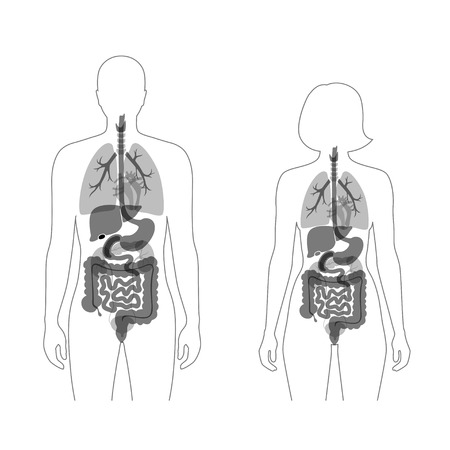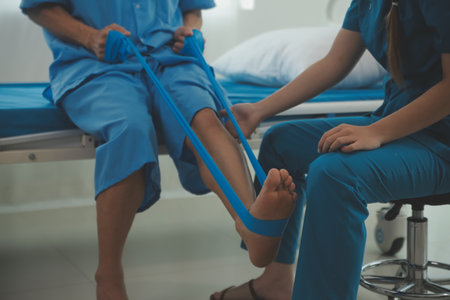Introduction: The Importance of Rehabilitation After Surgery
Every year, millions of Americans undergo surgeries—ranging from joint replacements to sports injury repairs. While the operation itself is a major milestone, what happens after surgery is just as important for long-term success. This is where rehabilitation steps in, especially with the help of skilled physical therapists across the United States.
Post-surgical rehabilitation is essential because it helps patients recover safely and effectively. Without proper rehab, there’s a higher risk of complications, such as stiffness, weakness, or even re-injury. Physical therapy isn’t just about exercises; it’s about building confidence, independence, and a better quality of life for people after surgery.
Why Is Post-Surgery Rehab So Critical?
| Reason | How It Helps |
|---|---|
| Pain Management | Physical therapists use techniques to reduce pain and swelling, making recovery more comfortable. |
| Restoring Mobility | Rehab improves range of motion so patients can move freely again. |
| Strength Building | Exercises target weakened muscles and joints to rebuild strength. |
| Preventing Complications | Therapy reduces risks like blood clots or scar tissue buildup. |
| Regaining Independence | Patients learn how to safely return to daily activities, work, or hobbies. |
The Role of Physical Therapy in Recovery
Physical therapists are experts in movement and recovery. After surgery, they create personalized plans tailored to each patient’s needs. In the US, therapy sessions often happen at outpatient clinics, home health visits, or even through telehealth appointments. Therapists use a mix of hands-on techniques, guided exercises, and education to support their patients every step of the way.
Real-Life Impact on Patients’ Lives
The true power of post-surgical rehabilitation shines through in real-life stories from everyday Americans. With the right guidance and motivation from their physical therapists, patients not only heal physically but also regain the confidence and ability to do what they love—whether that’s playing with grandchildren, returning to work, or hitting the golf course again. These journeys highlight how crucial rehab is for a full and lasting recovery after surgery.
2. Meet the Patients: Diverse Stories from Across the U.S.
Across the United States, people from all walks of life face surgery and turn to physical therapy to help them recover. Here are some real-life stories of Americans who took on the challenge, showing that recovery is possible no matter where you live or what your background is. These patients come from different regions, have had various surgeries, and each found their own path to success with physical therapy.
Patient Profiles
| Name | Region | Surgery Type | Physical Therapy Focus | Outcome |
|---|---|---|---|---|
| Linda, 62 | Midwest (Chicago, IL) | Knee Replacement | Regaining mobility and pain-free walking | Walks her dog daily; enjoys gardening again |
| Carlos, 28 | Southwest (Phoenix, AZ) | Shoulder Surgery (Rotator Cuff) | Restoring strength for his job as a mechanic | Returned to work after 10 weeks; lifting without pain |
| Tamika, 45 | Southeast (Atlanta, GA) | Spinal Fusion | Improving core strength and flexibility | Takes yoga classes; back pain greatly reduced |
| Mike, 36 | Northeast (Boston, MA) | ACL Reconstruction (Knee) | Athletic training for marathon running | Ran his first post-surgery half-marathon in under two hours |
| Susan, 55 | West Coast (Seattle, WA) | Hip Replacement | Balance and strength for hiking trails again | Hikes with friends every weekend; no more cane needed |
The Power of Personalized Care
No two journeys are exactly alike. Each patient had their own set of challenges and goals. Physical therapists across America create personalized plans that fit the individual—whether its getting back to work, returning to favorite hobbies, or simply enjoying everyday activities without pain.
A Closer Look at Real Experiences
- Lindas Story: After her knee replacement in Chicago, Linda was determined to get back to her daily walks. Her physical therapist helped her build up her strength step by step. Now she’s not only walking but also spending time gardening with less pain than ever before.
- Carlos’ Comeback: As a young mechanic in Phoenix, Carlos needed strong shoulders to keep working. Post-surgery therapy focused on exercises he could do at home and at work. With dedication and support from his PT team, he returned to his job in just over two months.
- Tamika’s Transformation: Living with chronic back pain in Atlanta was tough for Tamika. After spinal fusion surgery and a tailored PT program focusing on core stability, she now enjoys weekly yoga sessions and says she feels more flexible than before surgery.
- Mike’s Marathon: Mike loved running but feared he’d never race again after ACL surgery in Boston. His physical therapist set small milestones along his recovery path. Less than a year later, Mike finished a half-marathon—his proudest moment yet.
- Susan’s Adventure: Susan missed hiking Washington’s beautiful trails due to hip pain. Post-replacement therapy included balance drills and strength training. Now she hikes every weekend with friends—no cane required!
The American Spirit of Recovery
No matter where they live or what surgery theyve had, these patients show the resilience and hope found across the U.S. Through teamwork with skilled therapists and a lot of determination, they reclaimed their independence and got back to doing what they love most.

3. The Road to Recovery: Personalized Treatment Approaches
Every recovery journey in the United States is as unique as the person experiencing it. American physical therapists understand that no two patients are exactly alike, especially after surgery. This is why they create personalized rehabilitation plans designed to meet each individuals specific needs, goals, and lifestyle.
Customized Rehabilitation Plans
Physical therapists start by assessing a patients medical history, surgical details, daily activities, and personal goals. Whether someone wants to return to running marathons or simply play with their grandkids, these factors shape a customized plan. Therapists regularly adjust exercises and therapy intensity based on progress and feedback.
| Patient Goal | Customized Plan Example |
|---|---|
| Return to Work Quickly | Focus on functional movements needed for job tasks (e.g., lifting, standing) |
| Resume Sports or Hobbies | Sport-specific drills, balance training, agility exercises |
| Regain Independence at Home | Mobility training, stair climbing, safe transfer techniques |
Integrating Modern Technology
American clinics often use advanced technology to enhance rehabilitation outcomes. Tools like virtual reality systems make therapy sessions interactive and engaging. Wearable sensors help track movement accuracy and progress over time. Telehealth services allow patients to connect with their therapist from home—an option that became very popular during the COVID-19 pandemic.
Examples of Technology Used in US Physical Therapy:
- Virtual reality games for balance and coordination training
- Electrical stimulation devices to strengthen weak muscles
- Mobile apps for home exercise reminders and progress tracking
- Online video consultations for remote guidance
Cultural Preferences and Patient Comfort
A key part of American physical therapy is respecting cultural backgrounds and patient preferences. Therapists might adapt communication styles, provide information in a patient’s preferred language, or consider family involvement during sessions. This helps build trust and ensures patients feel comfortable and motivated throughout their recovery journey.
4. Overcoming Challenges: Navigating Obstacles and Staying Motivated
Common Hurdles in Post-Surgery Rehabilitation
Going through physical therapy after surgery is rarely a smooth road. Many patients in the U.S. face a range of challenges that can make recovery tough. Some of the most common obstacles include:
| Challenge | Description |
|---|---|
| Pain and Discomfort | Pain is a natural part of recovery, but it can make exercises feel overwhelming. |
| Insurance and Financial Issues | Insurance may not cover all therapy sessions, leaving patients worried about costs. |
| Emotional Setbacks | Feelings of frustration, sadness, or anxiety are common, especially if progress is slow. |
| Lack of Motivation | Repeating exercises day after day can feel boring or pointless at times. |
| Scheduling Conflicts | Balancing work, family, and therapy appointments can be difficult. |
How Patients in the U.S. Stay Engaged and Positive
Despite these hurdles, many Americans find ways to keep moving forward with their rehab. Here are some strategies commonly used by patients and therapists across the country:
Pain Management Techniques
- Using ice or heat packs before and after sessions to reduce soreness.
- Taking prescribed pain medication as directed by doctors.
- Learning proper breathing techniques to cope with discomfort during exercises.
Navigating Insurance and Financial Concerns
- Working closely with case managers or clinic staff to understand insurance coverage.
- Exploring payment plans or local programs that offer financial help for therapy costs.
- Advocating for themselves with insurance companies when needed.
Building Emotional Resilience
- Joining support groups—either in person or online—to connect with others going through similar journeys.
- Setting small, achievable goals and celebrating every win, no matter how minor it seems.
- Talking openly with their rehab team about fears or frustrations.
Staying Motivated Day After Day
- Tracking progress with journals, apps, or simple charts on the fridge.
- Incorporating music or podcasts into home exercise routines to make them more enjoyable.
- Inviting family members or friends to participate or cheer them on during sessions.
Sample Goal Tracker Table for Home Use
| Date | Goal/Exercise | Completed? | Mood/Notes |
|---|---|---|---|
| 6/1/2024 | Knee stretches (10 reps) | Yes | Sore but managed all reps! |
| 6/2/2024 | Knee bends (15 reps) | No | Pain was too much today; will try again tomorrow. |
| 6/3/2024 | Knee stretches (12 reps) | Yes | Easier than last time—feeling hopeful! |
This mix of practical tools and emotional support helps many U.S. patients overcome bumps in the road during post-surgery rehab. By focusing on small victories and leaning on available resources, it’s possible to stay engaged—and even inspired—throughout the recovery journey.
5. Celebrating Success: Returning to Everyday Life
For many Americans, the journey of rehabilitation after surgery is more than just regaining strength or mobility—it’s about getting back to the life they love. Across the United States, patients are making incredible comebacks, reaching important milestones as they return to work, reconnect with family, rejoin their favorite sports, and participate in community activities. Their stories inspire others and highlight the power of perseverance.
Milestones Achieved on the Road to Recovery
Physical therapy clinics in the US often celebrate patient milestones as part of their rehab programs. These achievements might seem small at first—like standing up without help or walking around the block—but for patients and their families, each step marks a major victory. Here’s a look at some common milestones:
| Milestone | Description | Patient Example |
|---|---|---|
| Returning to Work | Going back to a job, whether it’s a desk job or a physically demanding role | A construction worker who resumes site duties after knee replacement surgery |
| Family Time | Engaging in family events, playing with kids or grandkids, or attending gatherings | A mom who can once again chase her toddlers around the park post-hip surgery |
| Sports & Recreation | Rejoining recreational leagues or simply enjoying hobbies like hiking or golfing | A high school athlete returning to soccer practice after an ACL repair |
| Community Involvement | Participating in church groups, volunteer projects, or local clubs | A retiree volunteering at a food bank after shoulder surgery |
The Power of Perseverance and Community Support
The road to recovery isn’t always easy. Many patients credit their physical therapists, supportive families, and strong community ties for helping them through tough days. Rehabilitation clinics across America recognize these successes by sharing patient stories on social media, hosting “graduation” ceremonies when patients reach key goals, and encouraging peer support groups. These celebrations not only honor individual determination but also motivate others facing similar challenges.
Real-Life Stories That Inspire
Take John from Ohio, who returned to coaching his daughter’s softball team after rotator cuff surgery. Or Maria in California, who walked her son down the aisle pain-free following a total knee replacement. Their journeys show that with commitment and expert care, it’s possible to reclaim the activities—and connections—that matter most.
The Journey Continues
Each success story reminds us that rehabilitation is about more than physical healing; it’s about rebuilding confidence and rediscovering joy in everyday moments. As patients across the US celebrate their achievements big and small, they pave the way for others to believe in their own comeback stories.


